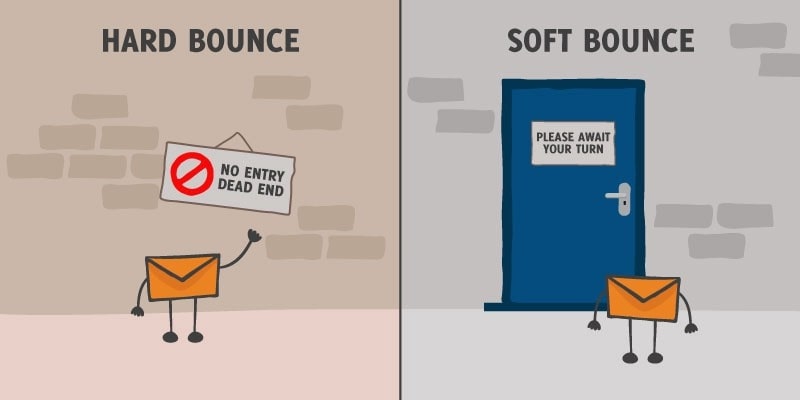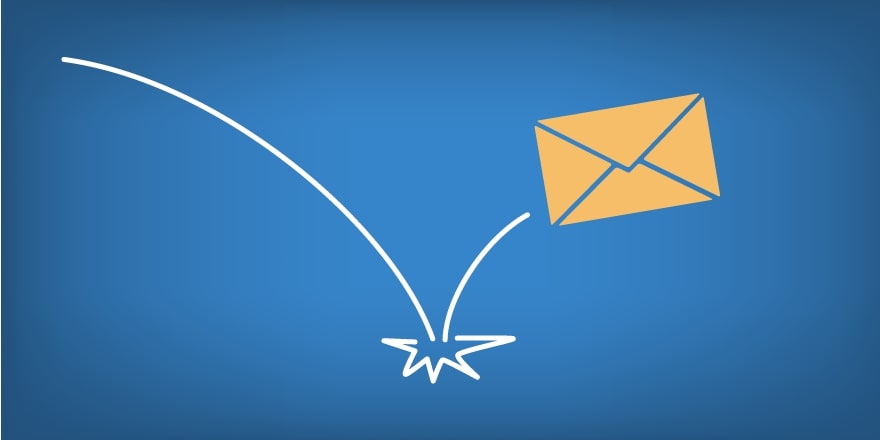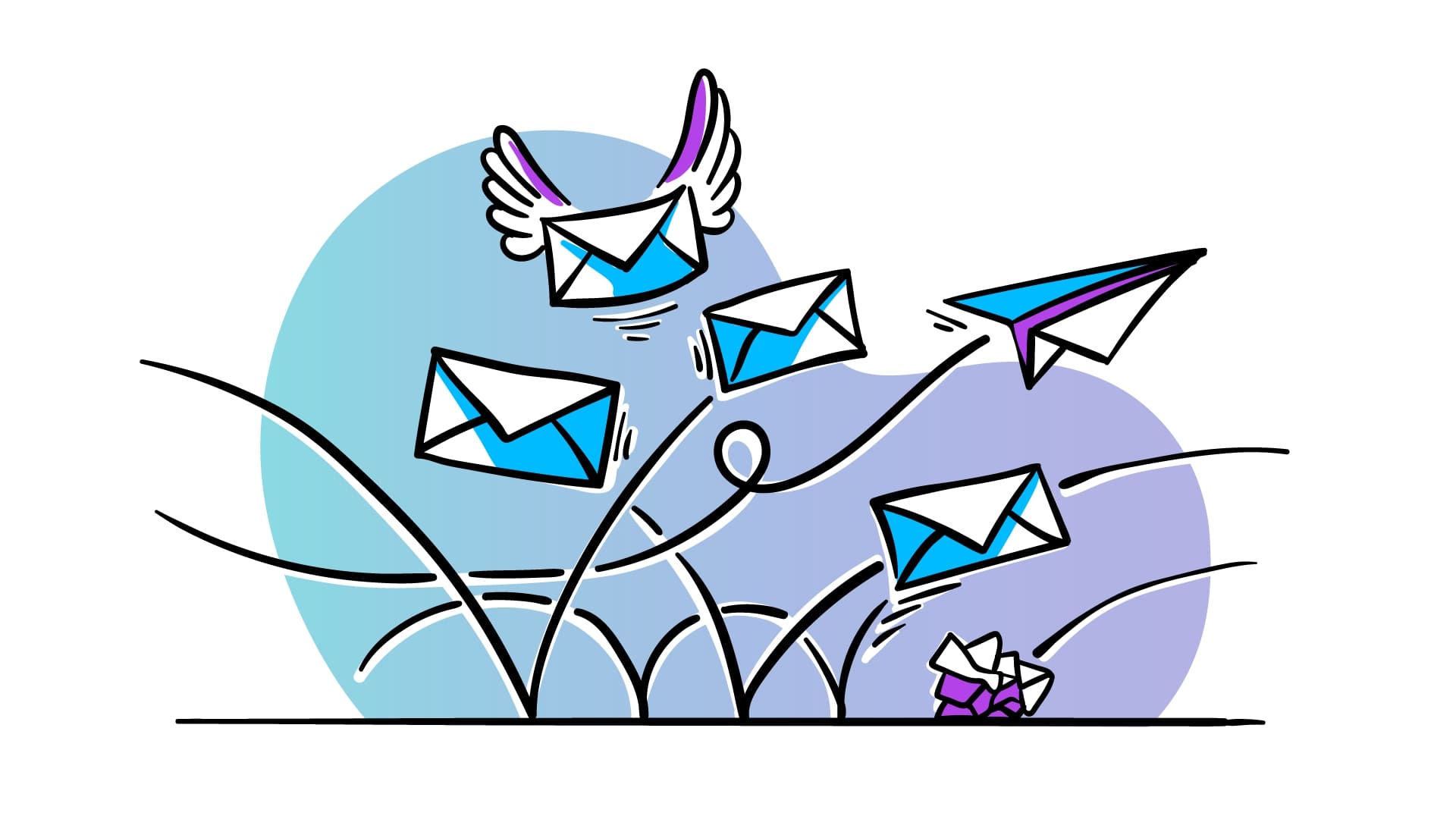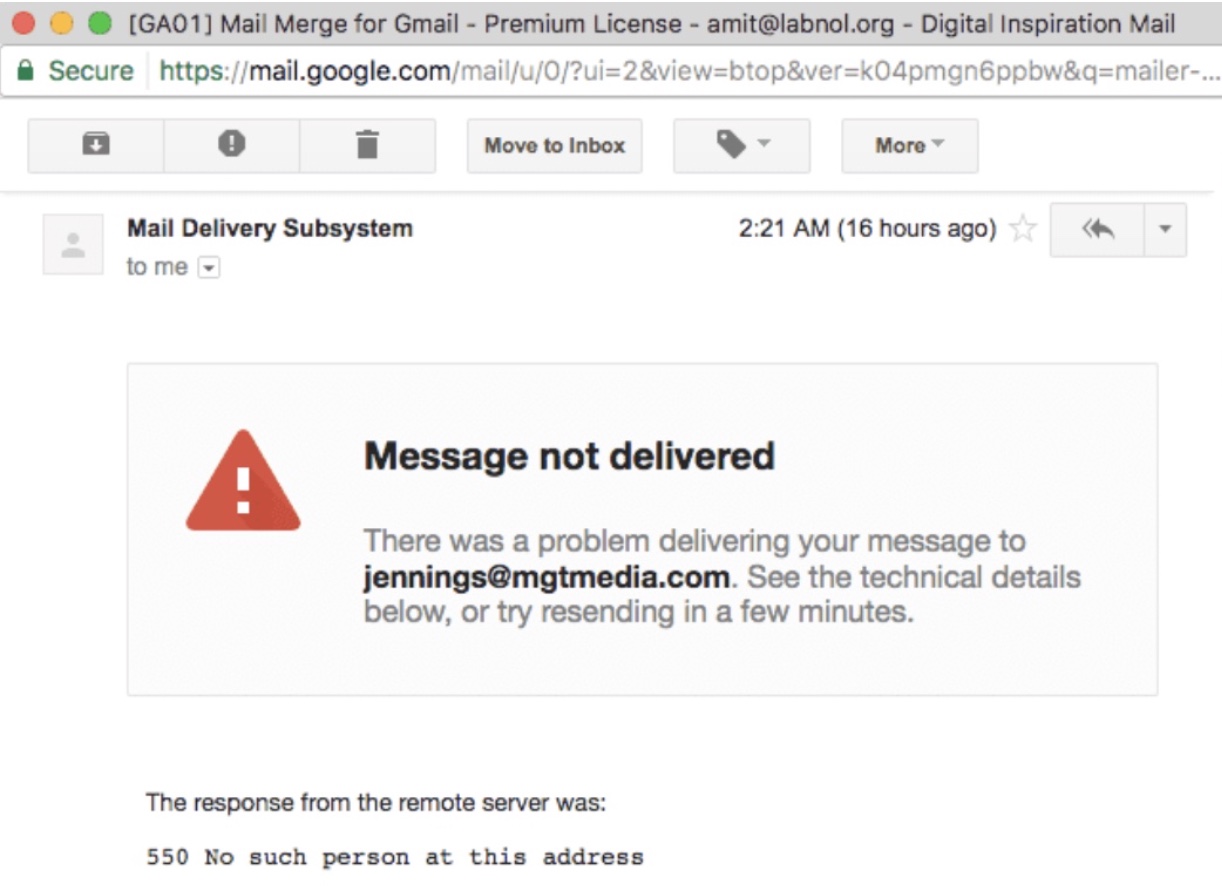What Is A Hard Bounce In Email Marketing?
Have you encountered this email marketing issue? You upload your subscriber list, launch the email campaign, and your subscriber count just drops. What happened to them all? Experienced email marketers will go to their campaign report to see if their audience has clicked the ‘Unsubscribe’ button. If they have kept on top of their email list management, this is usually the only explanation why subscribers are mysteriously disappearing.
However, if you are not monitoring your subscriber metrics, there is another explanation you can be losing people: hard bounces. So what are hard bounces? What is the difference between a hard bounce and another type of bounce called soft bounce? How can you prevent these problems from happening? Let’s answer these questions in this article. Let’s jump right into the details!
What does an email bounce mean?

Email bounces are the email marketing equivalent of “return to sender.” They indicate that your email service provider was unable to deliver the email you sent for a variety of reasons.
According to Better Bounces, 31 billion emails bounce every day, implying that almost every company has this problem at some point in their email marketing journey. In the vast majority of instances, the “it’s not you, it’s me” line is completely accurate: something went wrong on your subscriber’s end, resulting in your email not being sent to the inbox. But it’s difficult not to get the nagging feeling that if you’d done anything differently, the outcome would have been different.
What is a hard bounce?
A hard bounce is an email that is returned to the sender as a result of an error; most often the error is the recipient was an invalid address. Hard bounces are a significant email marketing metric, with email marketers aiming to reduce them as much as possible. Too many hard bounces can place a domain on blacklists, making it critical to track email lists on a regular basis, target the right users, and allow users to update their details.

What is a soft bounce?
A soft bounce is an email that fails to be delivered to the recipient’s inbox.. A soft bounce happens when your email campaign reaches your customer’s mail server (indicating that your email address was recognized) but the message is returned as undelivered before reaching the customer’s inbox.
Soft bounces can occur for a variety of reasons, including: the recipient’s mailbox being full; the receiving server being down; the message size being too large; the recipient’s settings not allowing for an email from the sender; suspicious or spammy content being detected; and many others.
Why do emails bounce?

When emails bounce, it’s typically not because of your email marketing tools. Your email tool sends the email successfully, but the subscriber’s email server refuses it for some reason. So what are those reasons?
Reasons for hard bounces:
- Email address does not exist: The most common cause of hard bounces is invalid emails. This occurs when the recipient’s address contains a typo, or when the address has been disabled and/or changed providers.
- The following email address was rejected by the recipient’s server: Some business, government, and institutional domains have more stringent inbox filtering policies.
Reasons for soft bounces:
- Email box is full: Some of your subscribers’ mailboxes have space limitations. If you exceed this cap, your email campaign will be returned to you.
- Domain timeout: The subscriber’s email server can be momentarily inaccessible, overwhelmed, or undergoing repair, in which case all incoming messages would be bounced. If this occurs, you should try resending your campaign the next day.
- Oversized message: While this is uncommon, some inboxes have sensitive filters that limit the message size. If your email is too cluttered with GIFs and pictures, it will bounce.
- Email account temporarily suspended: If a subscriber has not logged in for more than 365 days, or if their server detects irregular behavior, their account can be temporarily locked. That means the email will bounce.
- DMARC requirements: Your email message can not meet the recipient server’s DMARC authentication requirements. Simply put, the server is unable to authenticate the sender.
How to reduce your email bounce rate

To put it simply, both soft and hard bounce rates are problematic. We’ve compiled a list of our top four best practices to help you reduce the email bounce rate.
1. Use double opt-in
Often use double opt-in forms when collecting subscribers. Following registration, the subscriber will receive a confirmation email in which they must click a link to verify their email address. This extra move decreases the likelihood of spam email addresses being added to your subscription list. Using only subscriber list-building strategies that you believe in and can rely on. Buying email addresses is a big mistake that will come back to haunt you!
2. Maintain your email list hygiene
Maintaining a high-quality email list is important for preventing bounces. To verify and clean your subscriber lists, you can use email validation tools. Look for methods that go beyond list validation and offer useful email list analysis when it comes to email address verification. These insights will help you organize your list and identify emails that can be saved.
It is possible that a subscriber did not provide you with a valid email address. To stop hard bounces, always double-check the subscriber lists for typos.
If you switch to a new email marketing tool, make sure to only import your active subscribers. An accumulation of invalid email addresses can have a negative effect on your email deliverability.
3. Keep your timing consistent during email campaigns
Last but not least, you can ask your subscribers for updated information directly. In your next newsletter, direct your subscribers to a landing page. Inquire whether they want to change their information or content preferences.
The importance of consistency cannot be overstated. Set up an email calendar so that your subscribers can expect to hear from you on a frequent and reliable basis. An email calendar is a combination of the number of emails you send in a given time span (frequency), the type of emails you send, and the best times to send your emails. When you and your subscribers are in regular contact, the email service accepts the action as normal. Normal is a positive indicator in email marketing.
4. Don’t Use Free Sender Domains
Most email marketing companies now advise you to send emails from your own domain. This includes not using an account from a free website such as Gmail or Yahoo. Sending from your own domain, such as hello@yourbusiness.com, validates you as a legitimate person or company and reduces the likelihood of your message ending up in the Spam folder.

5. Remove Hard Bounced Email Addresses Out of Your List
Delete hard bounced email addresses from your list as part of your regular list cleaning routine. It’s pointless to retain them because they’re either wrong or inactive, which means your emails can never reach them. Hard bounced emails should be deleted as soon as they appear, which allow you to keep the email bounce rate low and stable.

6. Make Your Opt-Ins Relevant
Subscribers join the email list mostly by signing up for an opt-in, which may be an ebook, checklist, demo, or another freebie that brings them one step closer to making a purchase.
Create opt-ins that are hyper-focused on your target audience to ensure that the subscribers you have on your list are there for a reason and are engaged. The more relevant your content is, the more likely visitors are to provide you with an active email address in the first place and continue to open your emails.
Final Words
That’s it! I hope that this article has provided you with valuable information about hard bounces, as well as soft bounces, in email marketing. Please feel free to leave comments below for a further discussion on this topic!
New Posts






